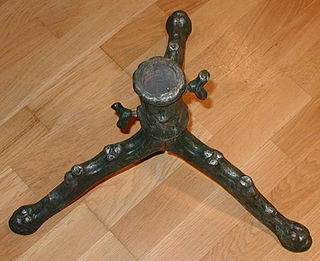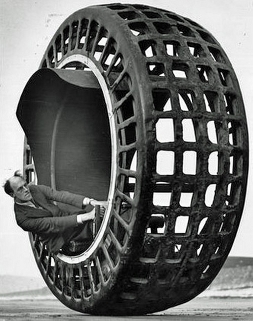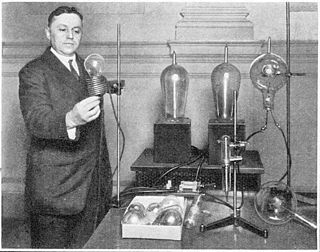
A still video camera (SVC) is a type of electronic camera that takes still images and stores them as single frames of video. They peaked in popularity in the late 1980s and can be seen as the predecessor to the digital camera. However, unlike the latter, the image storage in such cameras is based on analog technology, rather than as a digital file.
HICAS is Nissan's rear wheel steering system which was fitted to cars from approximately 1985 to 2010, including models ranging from the Skyline and Fairlady Z (Z32) to smaller vehicles like the Nissan Cefiro (A31), Silvia /240SX/180SX and Nissan Serena/Nissan Largo. It is also found on models from the Infiniti division, such as the Q45, J30, M45/M35 and G35/G37.
Exposure in magic refers to the practice of revealing the methods of magic tricks.

Ripple Rock is an underwater mountain located in the Seymour Narrows of the Discovery Passage in British Columbia, Canada. It had two peaks that produced large, dangerous eddies from the strong tidal currents that flowed around them at low tide. Ships transiting the strait preferred to wait until slack tide in order to safely bypass the rock.

Marvin Pipkin was an American chemist, engineer, and scientist. During his time in the United States Army, he worked on gas mask innovations. These masks were used by soldiers as well as the public during World War I for protection against chemical weapons. His innovative improvements were used through the twentieth century.

Natalie Hays Hammond was an American artist, writer, and inventor. She worked in the fields of painting, miniatures, textile arts, and costume and set design. She worked with Martha Graham and Alice D. Laughlin to create the first woman-produced Broadway theatre production.

SS Dumaru was a Design 1003, Hough-type wooden steam ship launched on April 17, 1918, in Portland, Oregon, as part of the United States Shipping Board Merchant Fleet Corporation. On October 16, 1918, during her maiden voyage, Dumaru was struck by lightning off the coast of Guam, igniting her munitions cargo and destroying the ship.

A Christmas tree stand is an object designed to support a cut, natural or an artificial Christmas tree. Christmas tree stands appeared as early as 1876 and have had various designs over the years. Those stands designed for natural trees have a water-well, which, in many cases may not hold enough water to adequately supply the cut tree. Some specialty Christmas tree stands have value on the secondary antiques market.

Floats are airtight hollow structures, similar to pressure vessels, designed to provide buoyancy in water. Their principal applications are in watercraft hulls, aircraft floats, floating piers, pontoon rhinos, pontoon causeways, and marine engineering applications such as salvage.

The Dynasphere is a monowheel vehicle design patented in 1930 by John Archibald Purves FRSE from Taunton, Somerset, UK.

The iron Dobbin was a mechanical horse which was first described in Popular Science Monthly in April 1933. The machine, designed by an Italian inventor, was powered by a gasoline engine and moved upon steel pipes allowing it to traverse a rough field. The device was to be used to train the youth of the Gioventù Italiana del Littorio to ride, but was rejected by the Italian military as impractical.
Frederick Settle Barff was an English chemist, ecclesiastical decorator, and stained glass manufacturer, much interested in theology.

The Sieg automatic rifle was a bullpup automatic rifle designed by Chief Gunner's Mate James E. Sieg of the US Coast Guard. The weapon was chambered in the .30-06 round, fed from 20 round magazines and capable of firing around 650–700 RPM on full automatic. A two-finger double trigger selected between semiautomatic and fully automatic fire. The barrel came with a unique muzzle compensator that could be turned off for use with a flash hider or grenade launcher without interfering with the installation of a bayonet. Recoil gently threw the barrel of the Sieg rifle downward, not upward. When tested at Fort Benning, it had effective results. The compensator was extremely effective; it also enabled the user to fire the rifle with one hand.

A clean-burning stove is a stove with reduced toxic and polluting emissions. The term refers to solid-fuel stoves such as wood-burning stoves for either domestic heating, domestic cooking or both. In the context of a cooking stove, especially in lower-income countries, such a stove is distinct from a clean-burning-fuel stove, which typically burns clean fuels such as ethanol, biogas, LPG, or kerosene. Studies into clean-burning cooking stoves in lower-income countries have shown that they reduce the emissions of dangerous particulates and carbon monoxide significantly, use less fuel than regular stoves, and result in fewer burn injuries. However, the emissions some supposedly clean-burning cookstoves produce are still much greater than safe limits, and in several studies in lower income countries they did not appear to be effective at reducing illnesses such as pneumonia induced by breathing polluted air, which may have many sources.

A tent platform is a floor for the purpose of pitching one or more tents upon. Typically, it is a wooden deck near a hiking trail that provides the hikers a clean and even place to sleep. It may also prevent the campers from trampling down the surrounding vegetation. Many campsites have tent platforms. Mountaineers sometimes build tent platforms in their base camps from materials such as pebble or snow.
The Kodak verifax is a photo copying approach that uses a wet colloidal diffusion transfer technique patented by Yutzy, H.C. and Yackel, E.C. (1947) The light source is projected to the top crossing the negative being reflected -more or less, according to the color- against the original to be copied exposing the negative. Has a base that contains the recipient with the liquid developer and the exposure timer.

A combination plate can refer to several things, including:

Harvey Clayton Rentschler was an American physicist, inventor, and uranium metallurgist.
The Mazda Suitcase Car was a prototype suitcase vehicle created in 1991 by the Mazda company. The suitcase opened up to reveal a functioning three-wheeled gasoline-powered vehicle with working lights. The vehicle, which resembled a go-kart, was created by Mazda engineers and showcased in the United States and Europe at auto shows.













